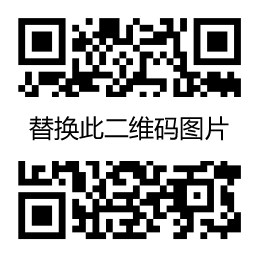教学目标
知识目标
1.词汇
New words and phrases: teach oneself, fall off, clever, yourselves, find out, piano, poor, afford, knock, knock at, dim, pardon, to one's surprise, blind, shine, bright, brightly, through, look up, silently, come along, return, cookie, leave…behind, moonlight, sonata, write down, go on trips, care for.
2.日常交际用语
Did she learn all by herself?
Could she swim when she was…years ago?
She didn't hurt herself.
He couldn't buy himself many nice things.
Did he enjoy himself?
Help yourself.
It is time for us to leave /do something now.
It's getting late.
3.语法
并列句:
Beethoven knocked the door and it opened.
I am poor, but I always enjoy myself.
反身代词用法
单数:myself, yourself, himself, itself
复数:ourselves, yourselves, themselves
反身代词固定搭配:
Help yourself.
I can look after myself.
She didn't hurt herself.
Did you enjoy yourselves?
能力目标
1.使学生能够运用一般过去时讨论过去经历的事情,并能在教师设计的情景中灵活使用并列句,反身代词和情态动词could。
2.使学生能够读懂第82课课文,回答课后的问题,并能根据上下文判断出生词的大意。
3.使学生能掌握本单元的相关语法项目,并能完成口头和笔头的练习。
4.使学生能够听懂与课文难度相当的听力材料。
情感态度目标
通过本单元的教学,使学生在简要了解贝多芬生平的基础上,鼓励他们向贝多芬学习。学习他博学多才、坚忍不拔、持之以恒,追求自己崇高理想的精神。青年学生正处于增长知识和才能的黄金时期,不论遇到什么风浪,绝不要半途而废。相反要扬起风帆,把航船驶向胜利的彼岸。
贝多芬是一位著名的音乐家,他的创作成就极大地深化了音乐艺术的思想性和表现力,对后世有着深远的影响。在本单元的教学过程中教师可选用一些贝多芬的代表作,在课前或课后播放给学生听,以陶冶他们的情操,提高他们对名曲的欣赏能力。
教学建议
教学内容分析
本单元是以讨论过去的经历为主要话题,同时学习反身代词及并列句的用法,还包括情态动词 can /could的用法。在第81课中主要通过听,说,谈论等几种方式使学生能正确运用情态动词can /could和过去式讨论过去发生的事件。在第82课中主要是通过一篇阅读文章来提高学生的阅读能力。在第83课中主要是通过对贫富两个人的介绍和一个对话使学生掌握并列句和几个反身代词固定搭配。在第84课中练习形式多样,主要是对本单元内容进行综合练习。
教学重点分析
本单元的重点语法是并列句和反身代词,单元的教学功能项目也是围绕这些展开的。Lesson 81的对话建立在两幅图片的基础上,就Lily的过去经历进行问答,引出反身代词的用法。Lesson 83中的介绍Mr. More和Mr. Little 两位先生的短文,通过对各人本身过去经历的提问,进一步学习反身代词和一般过去时态。Lesson82的课文,我们可带着如下问题去学习:What do you know about Beethoven?全篇课文以过去的时态进行介绍的,我们应学会用过去时态去写过去的事情或人物。Lesson 84的对话,我们要能够模仿运用,同时学会写“Thank-you note”。
关于介绍过去发生事情的建议
1.图片提示
The teacher can show some pictures of the students at different ages on the blackboard and ask these questions: 
A. What is the girl’s name?What is she doing? What could she do when she was five years old?
B. Who is the boy? What happened at that moment? (take a plane) How did he finish the trip? (by air)
2.教师可以通过简笔画的形式组织学生根据图画内容编写下列对话:
(1) A: Can you play computer games, Mary?
 B: Yes, I can.
B: Yes, I can.
A: Could you play computer games when you were five years?
B: No, I couldn’t.
(2) A: Can you play violin?
B: Yes, I can.
 A: Could you play the violin when you six?
A: Could you play the violin when you six?
B: No, I couldn’t. I began to learn to play the violin last year.
A: How did you learn it?
B: I learned it by myself.
有关并列句的教学建议
教师先写出一些句子,让学生分析,找出并列句的基本特点,最后由教师归纳这些并列连词的用法。
然后让学生自己做一些练习,加强对并列句的理解。现提供两例:
1.将下列用and 或but 连接.
A.I am poor. I am very happy.
B. I like English. I am good at it.
C. My father told Mary this story. Mary became interested in it
D. He fell off the wall. He didn’t break his arms.
2.判断下列句中and或but的用法是否正确.
A.I can swim, and I am good at it.
B.I wanted to have
声明:有的资源均来自网络转载,版权归原作者所有,如有侵犯到您的权益 请联系邮箱:yuname@163.com 我们将配合处理!
原文地址:Unit 21 She taught herself发布于2021-10-22

